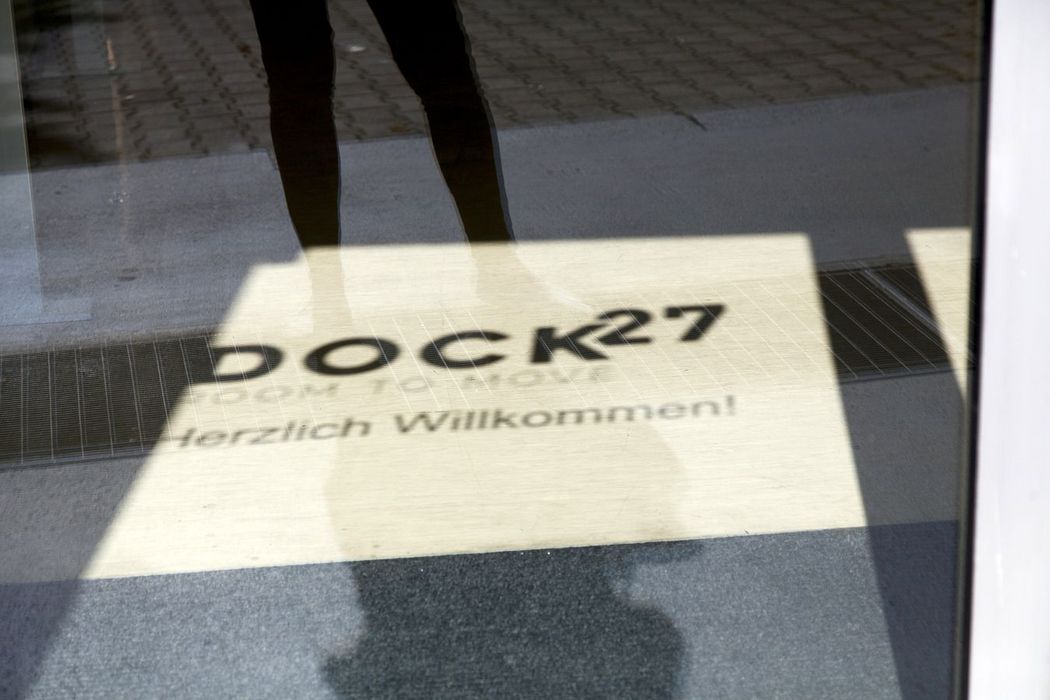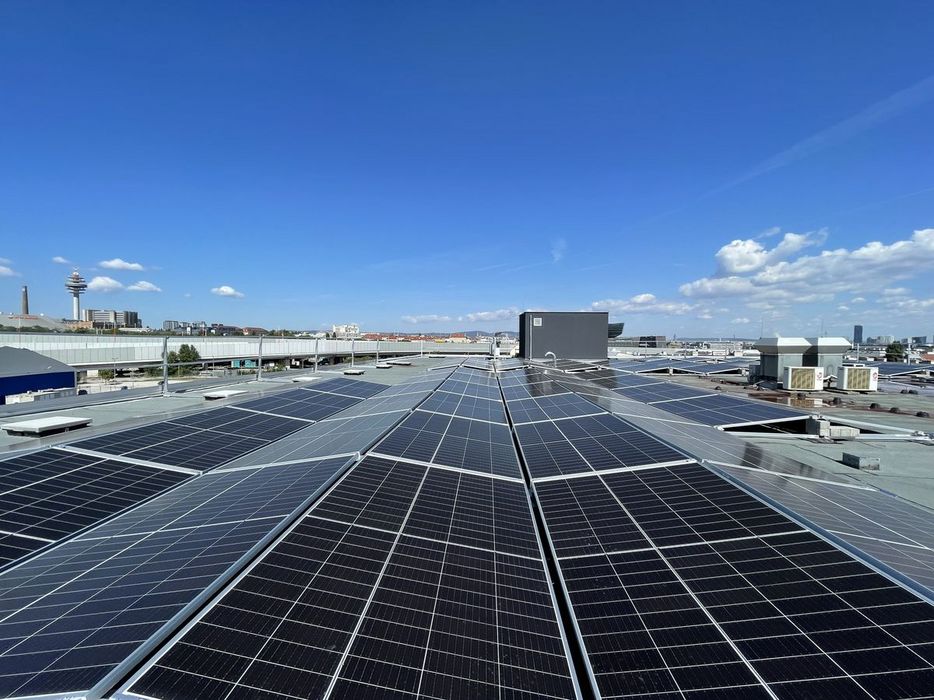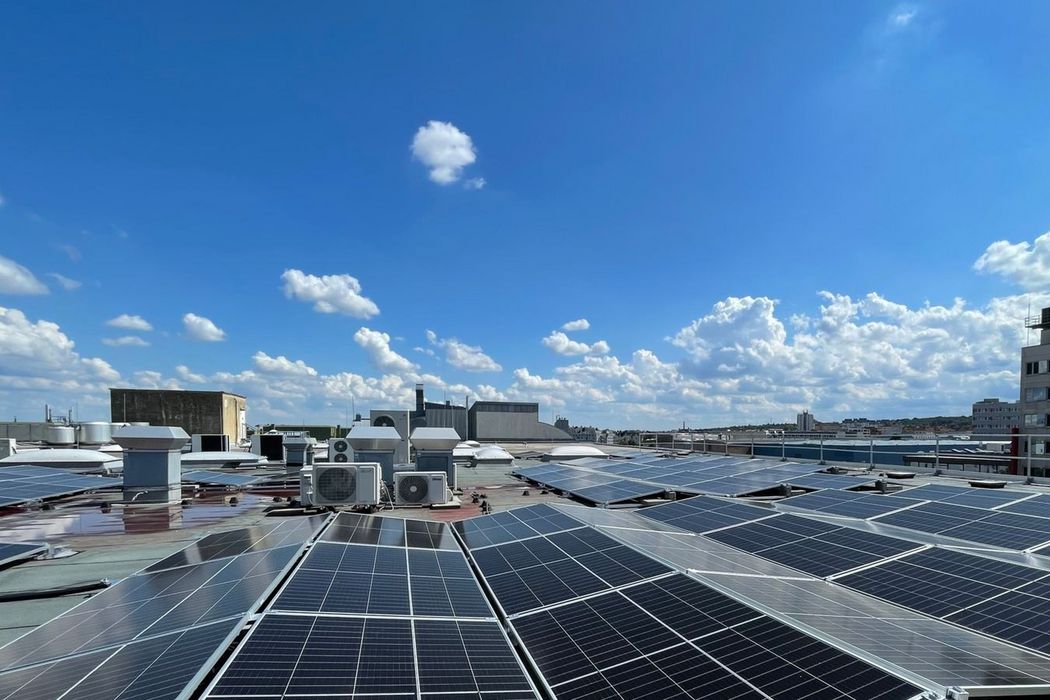Full Solar Ahead!
- Topic
- Inspiration & Information
- Date
- 16.09.2022
When we bought it, the office building in the Simmering district of Vienna was only moderately sexy. It was dusty, aging, and had a lot of vacant office spaces. Today, it has been renamed Dock 27, is fully refurbished to its former sleek industrial style, and all spaces are rented. The latest accomplishment is one that puts us solidly on a path to future: a photovoltaic system was installed on the roof in summer of 2022.
Since being revitalized and fully occupied, the 3,350 m² of floor space offered by this functional and highly adaptable building is home to three primary tenants and a mix of smaller service companies.
Up on the rooftop …
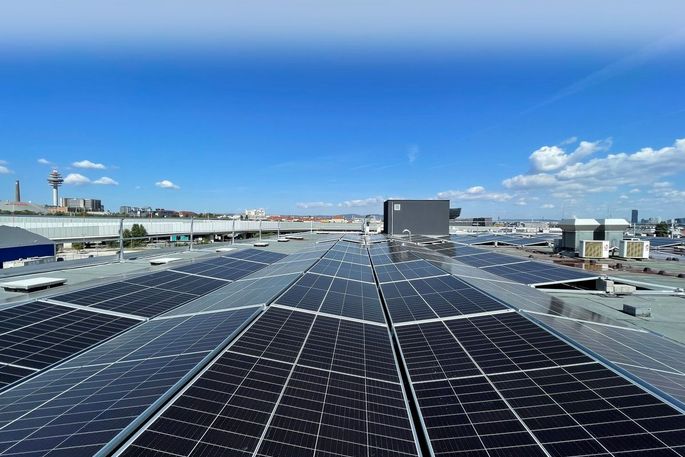
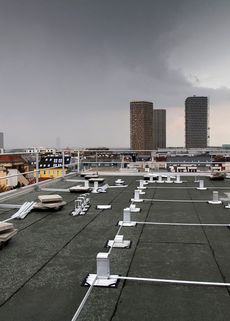
is a solar energy system that now ensures the building is operated at maximum cost efficiency while moving full speed into a sustainable future: A total of 150 modules will generate 60,000 kilowatt hours of electricity per year on 280 m² of roof space, thus achieving significant savings. Any generated power surplus is fed into the Vienna power grid.
We would like to take a moment to briefly explain how this whole solar electricity thing works:
An average household (two-bedroom apartment) consumes around 3,000 kWh of electricity annually. In comparison: it takes about 1 kWh to iron 15 shirts, do a load of laundry, watch TV for 7 hours, work on a laptop for 50 hours, toast 133 slices of bread, or shave the 3-day beards of 2,500 men—depending on the type of their personal appliances of course.

And how does sunlight convert into electricity?
Direct current electricity is generated by the solar cells of the modules when the sun shines on the photovoltaic panels, which are optimally aligned towards the sun to reduce shade interference. The direct current is then fed into an inverter (installed up on the Dock 27 roof) and converted into alternating current, the type of electricity needed to operate household appliances and other building services (e.g. elevator, lights, and e-charging stations).
If more solar energy is produced than being used by the building, surplus is fed into the public grid.
P.S.:The building is now fully optimized—both aesthetically and energetically—and is now ready for a sustainable future. In addition to this, the companies that have relocated to the building during its transformation are bringing it to life. This means that our development mission is now fulfilled. Ahoy, Dock 27 and bon voyage! You were a great project!
P.P.S.: Modern energy systems often use photovoltaic panels in combination with heat pumps. This ensures that households are largely energy self-sufficient. The solar energy system not only supplies the usual household appliances with electricity, but also the heat pump, which creates hot water and heating or cooling as needed.
